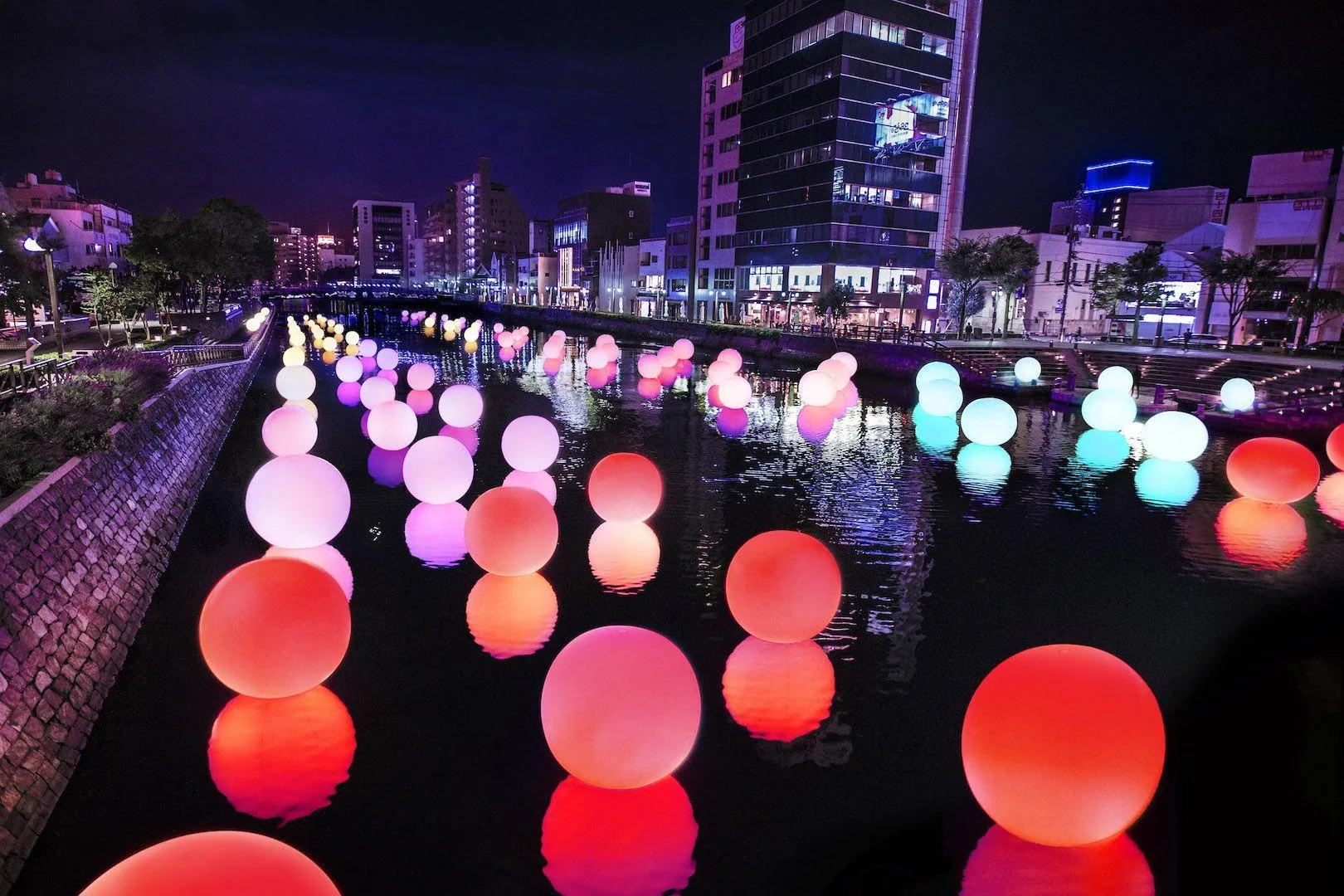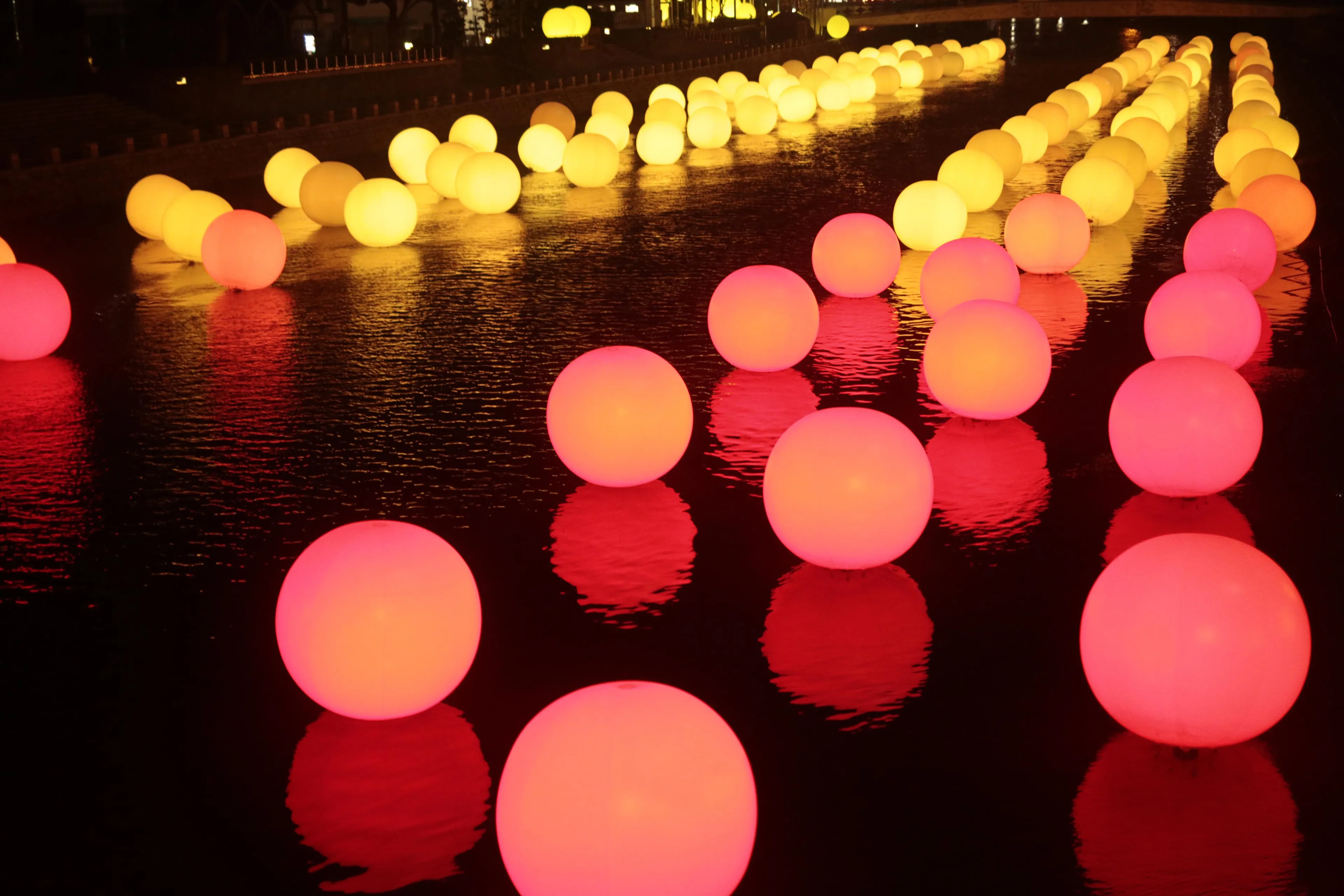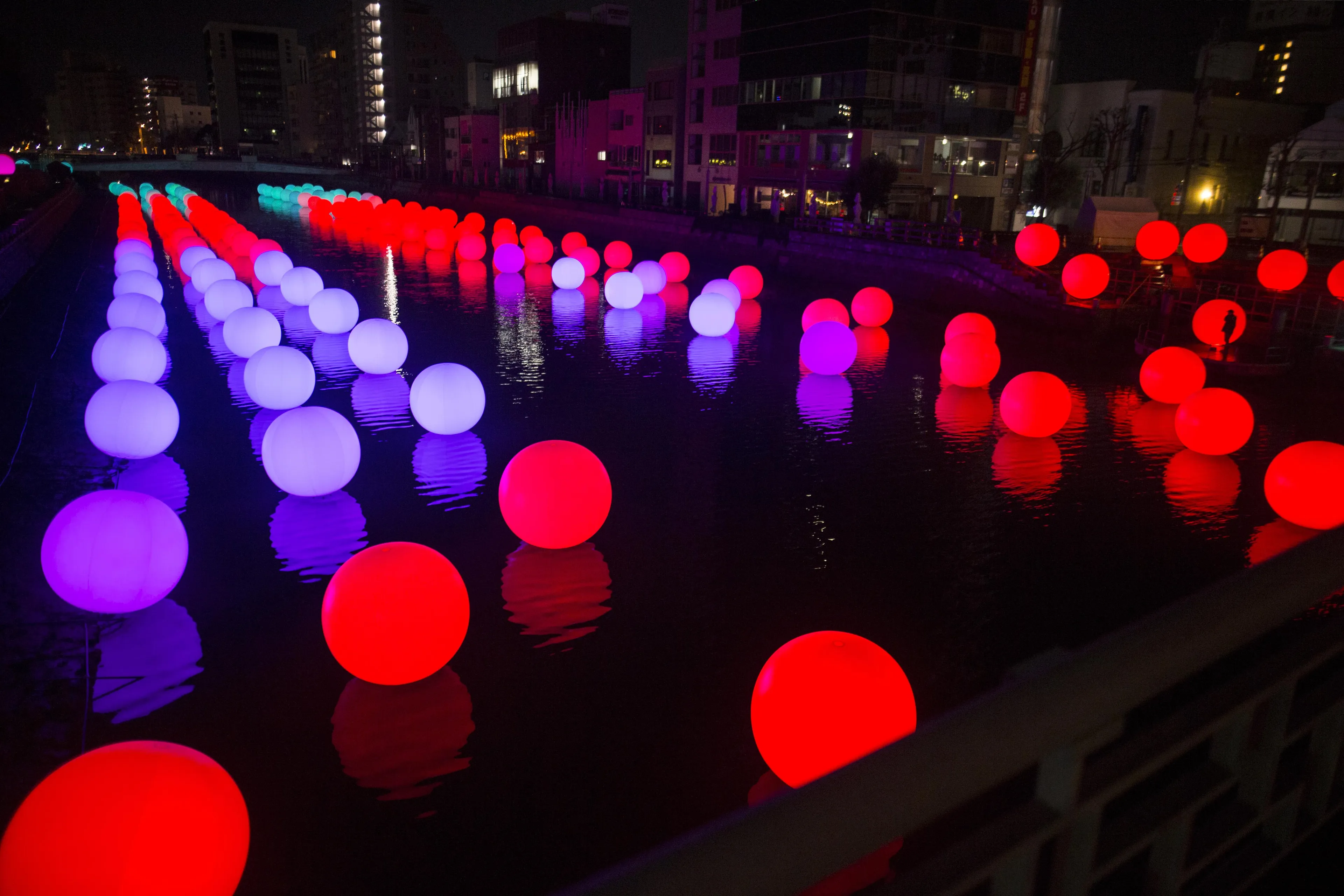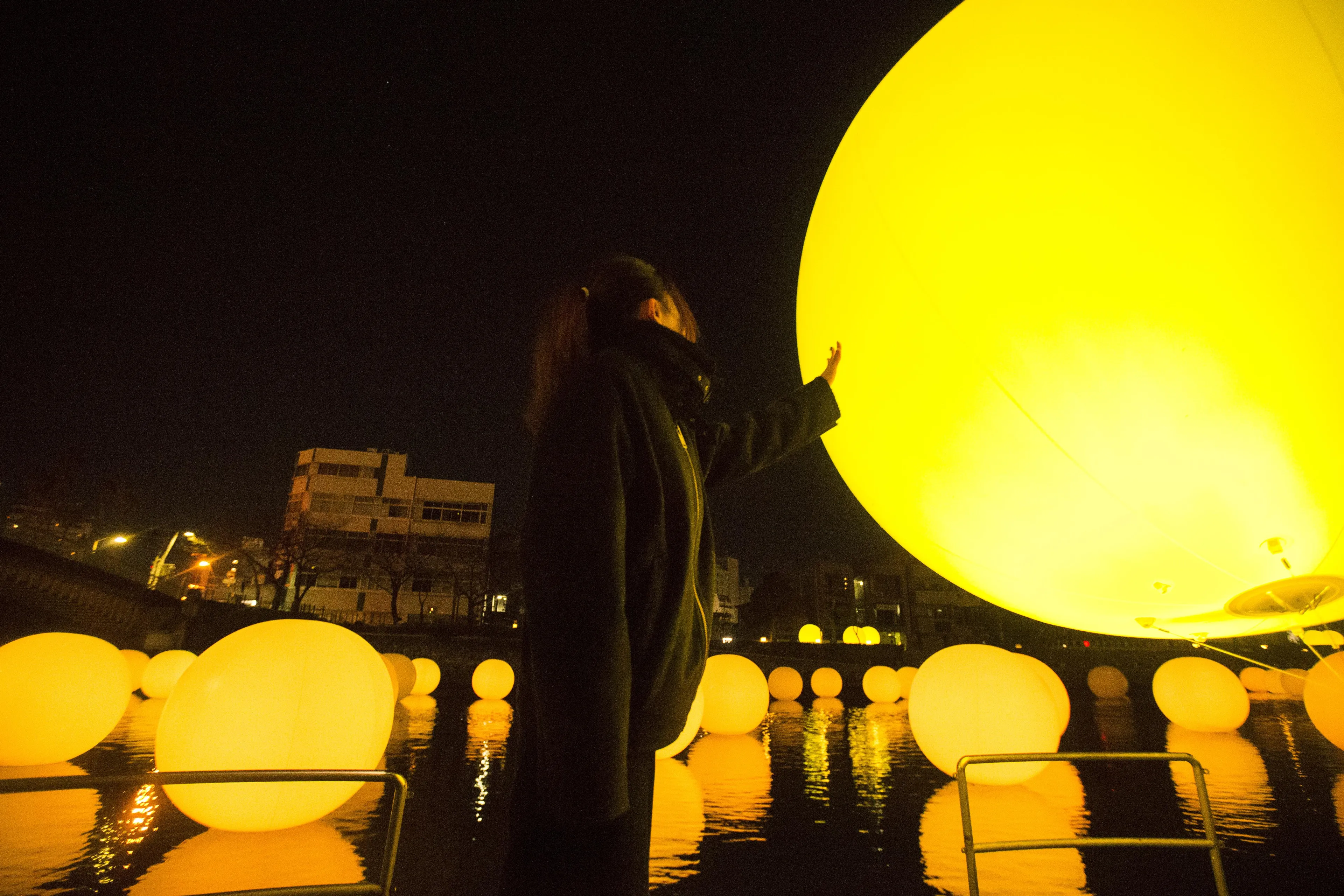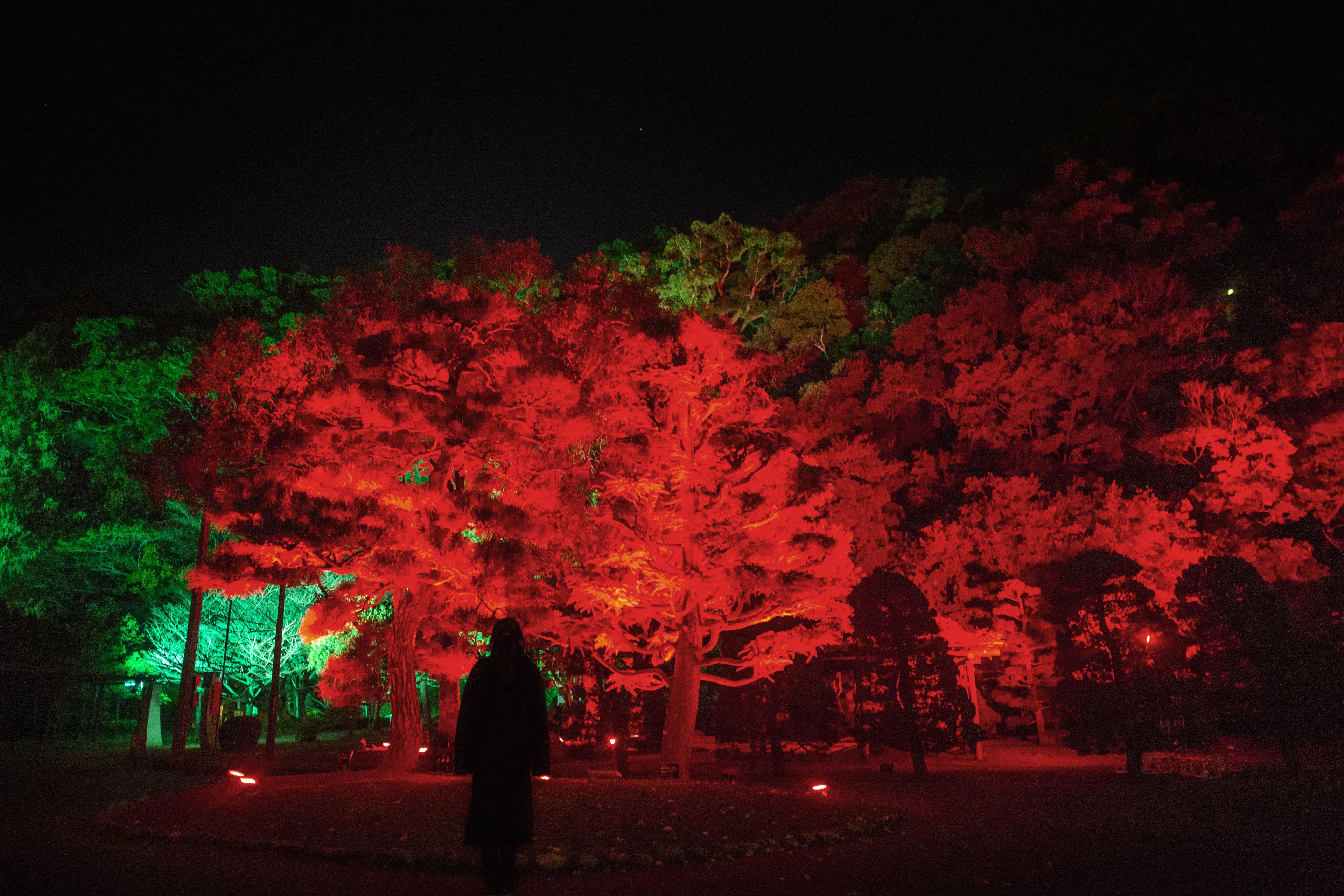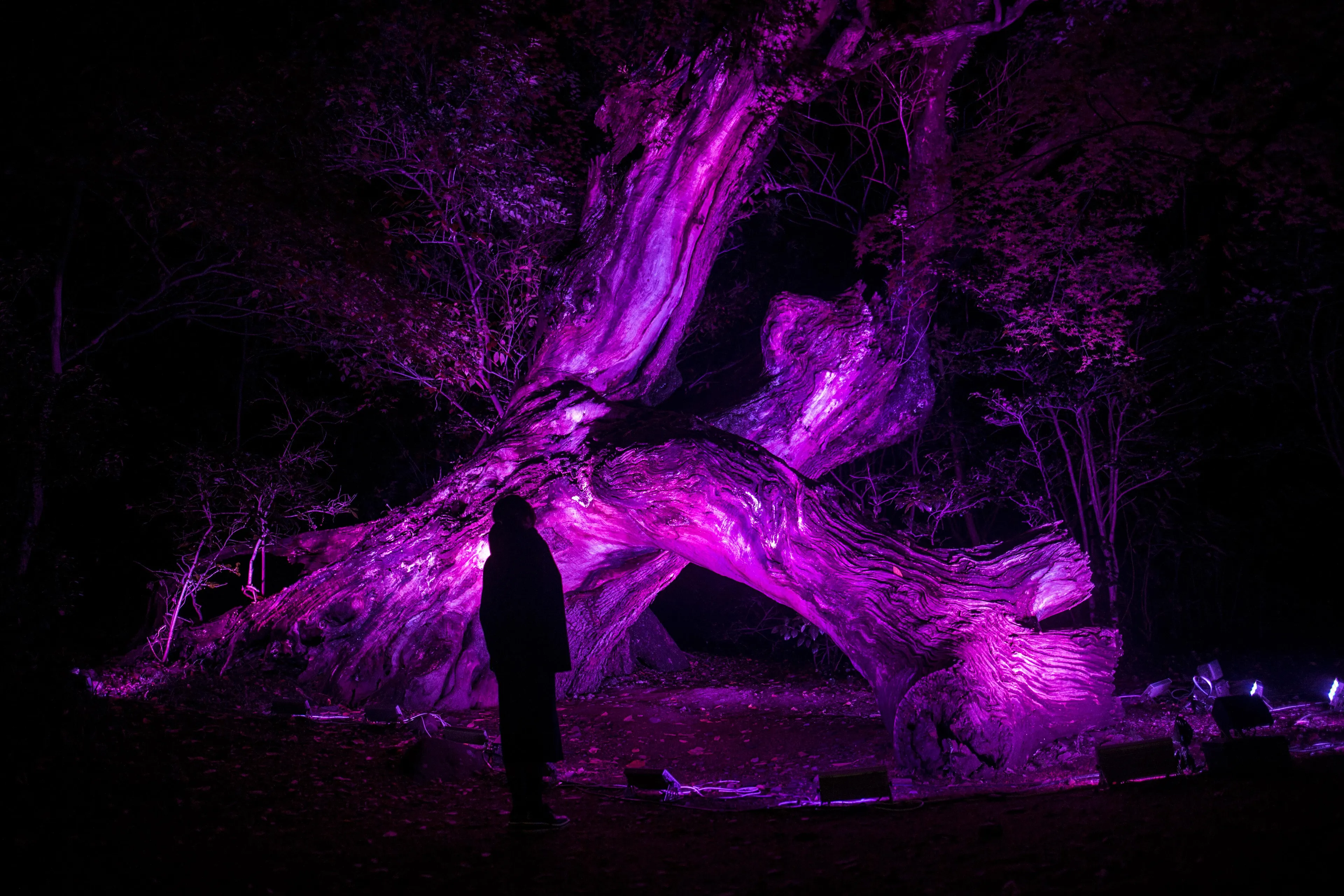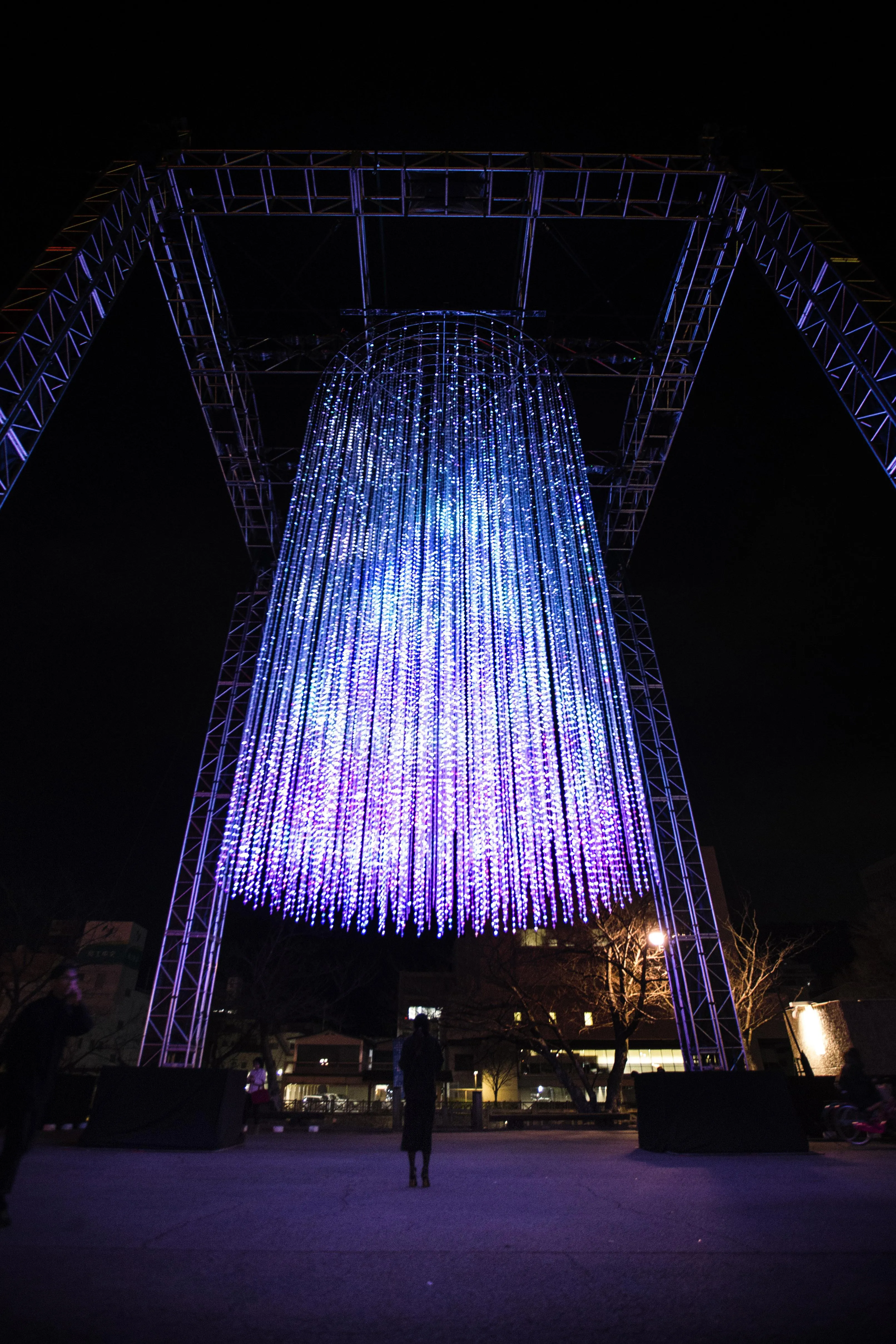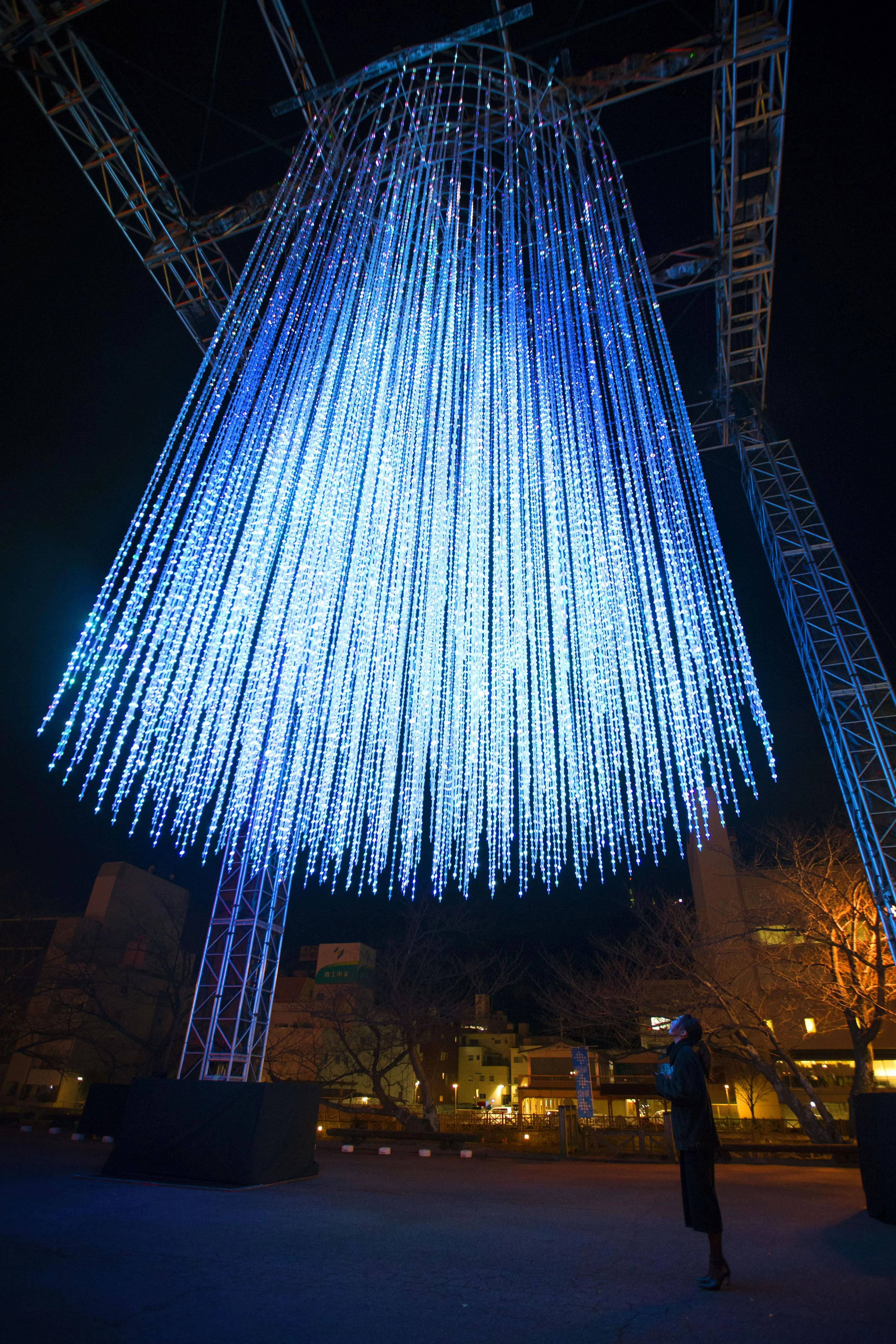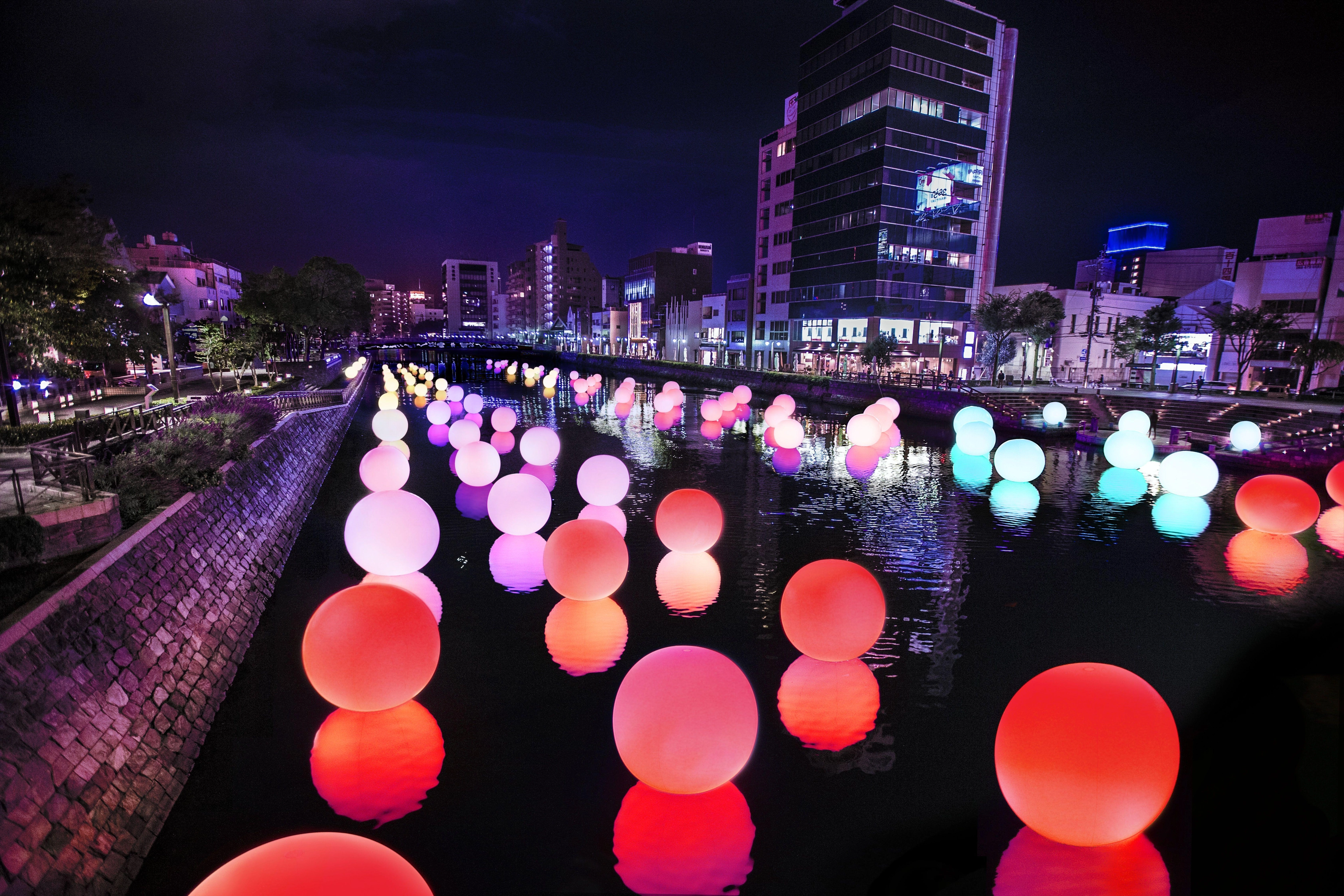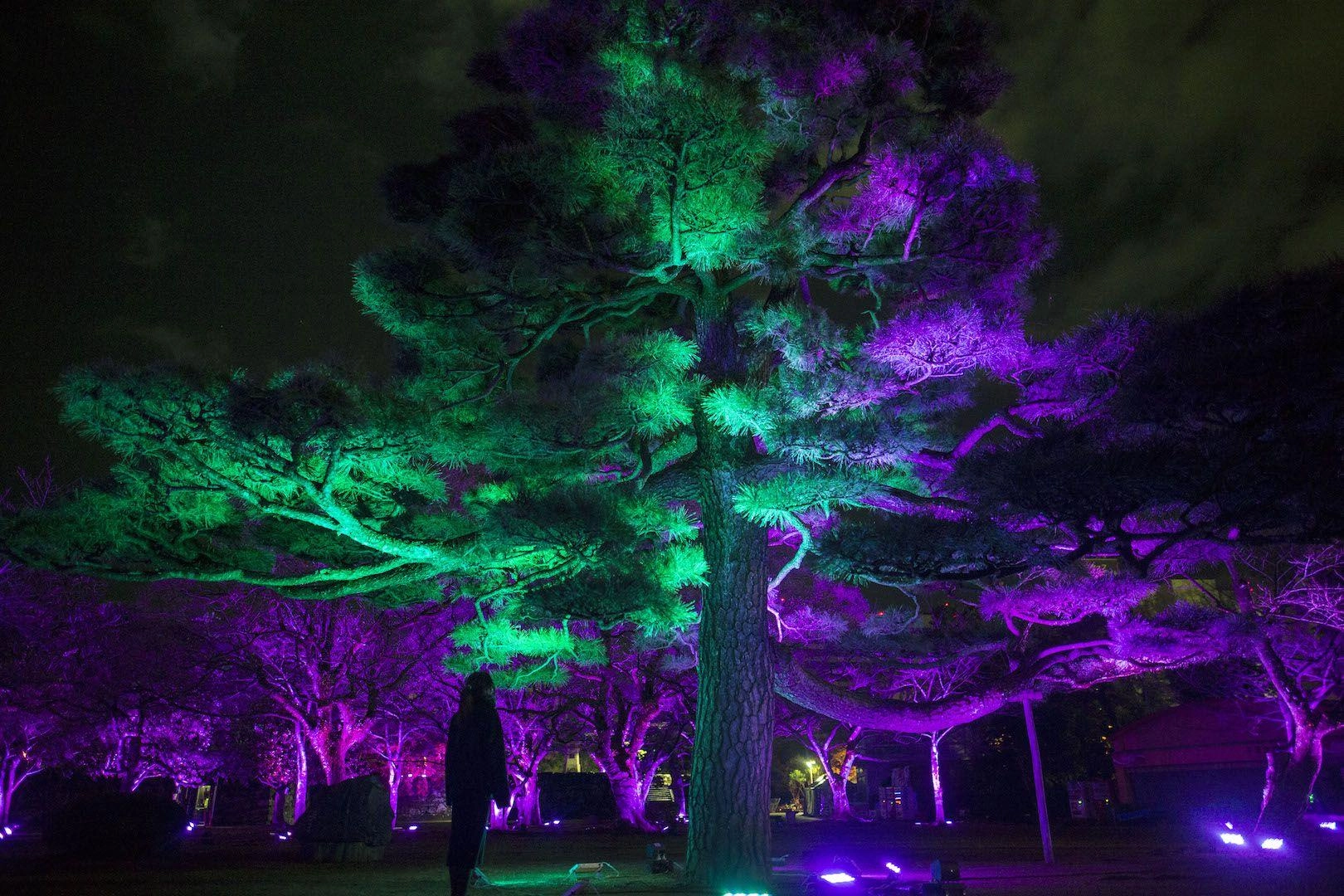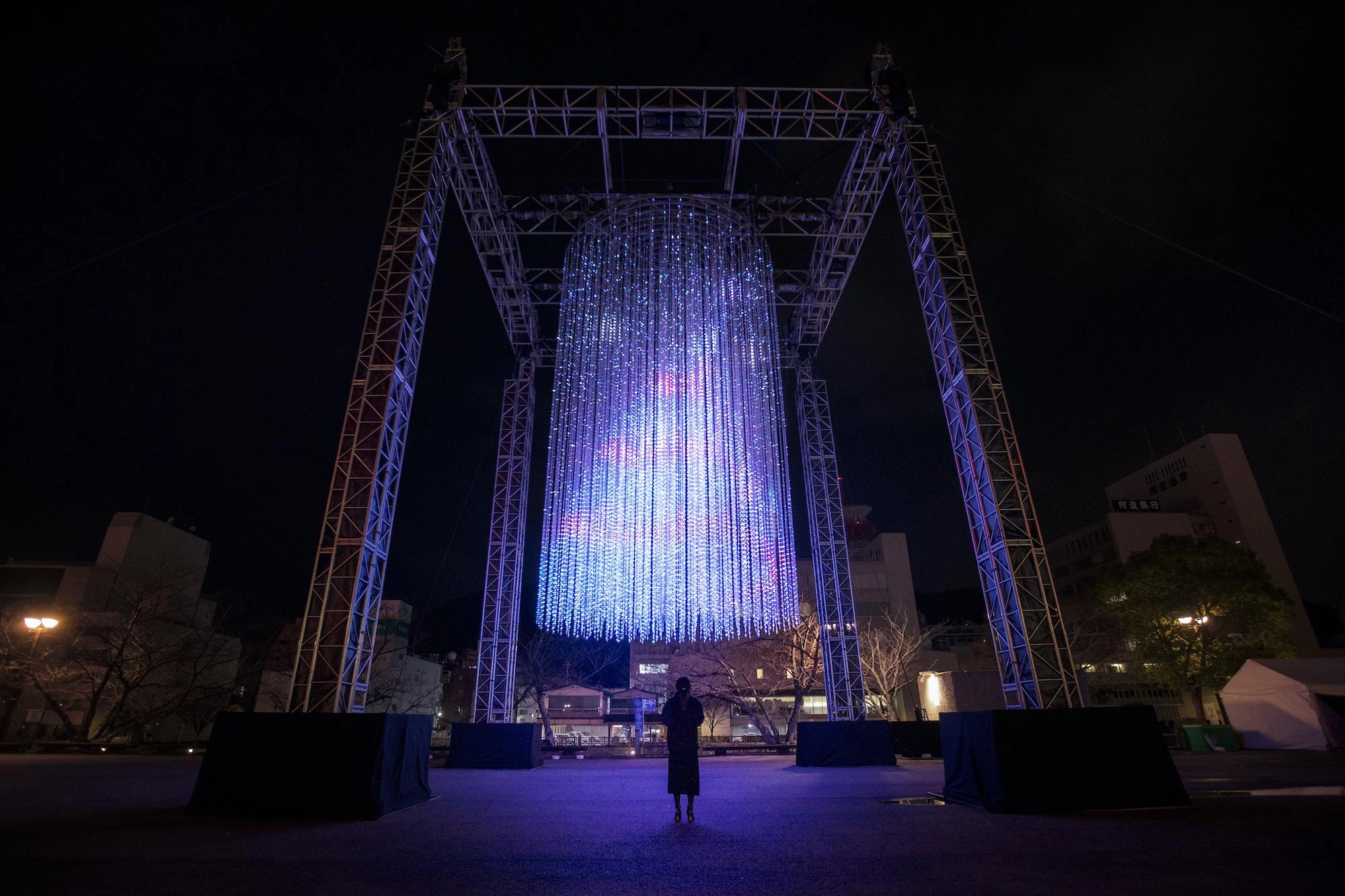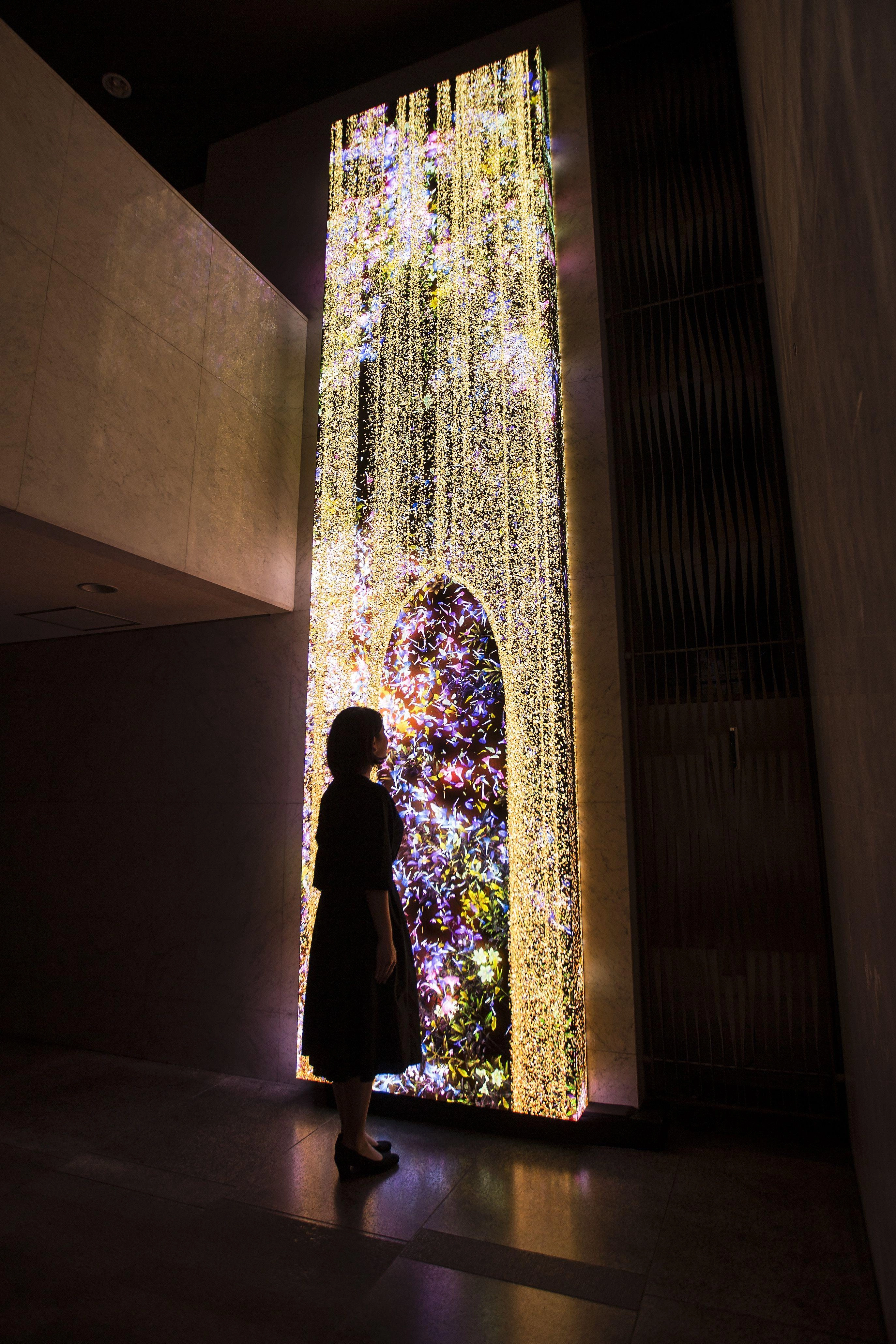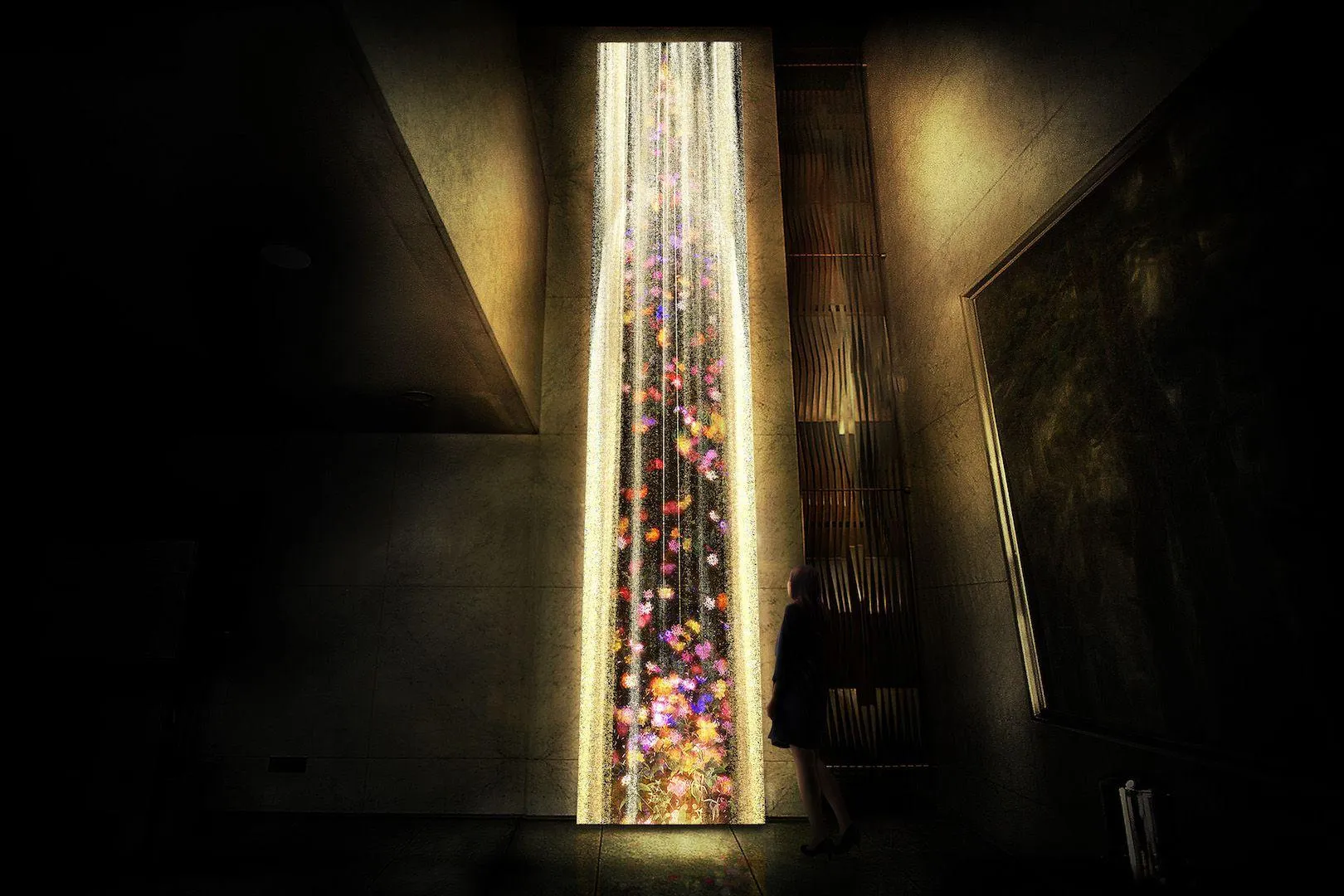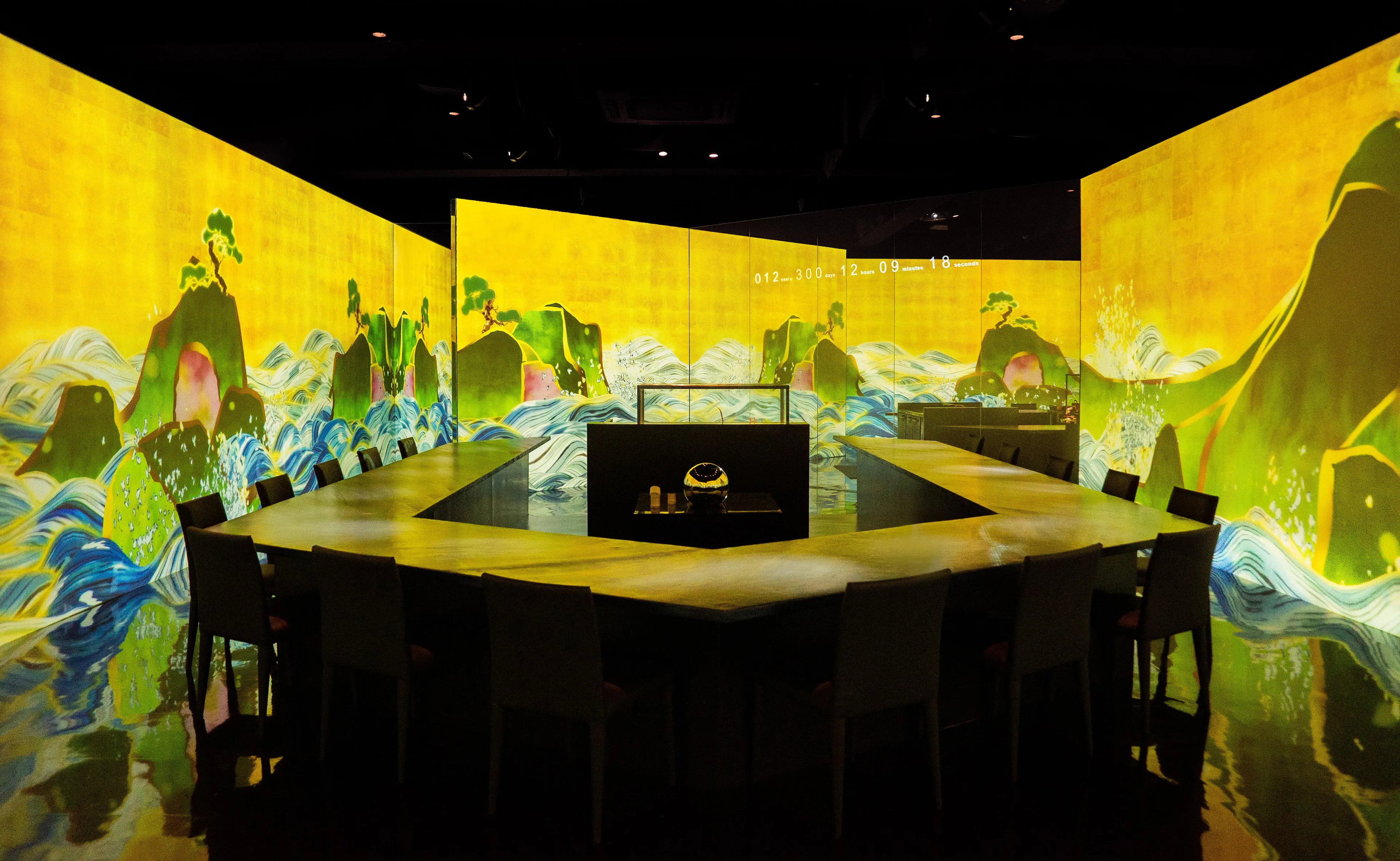Flowers in the Sandfall - Tokushima
Height 5210mm, Width1280mm, Depth160mm, a giant three-dimensional LED object.
With the changing of the months throughout the year, the flowers of Tokushima bloom and scatter. They are in constant change. Flowers grow, bud, and blossom, and eventually they scatter, wither, and fade away. The flowers are in a continual cycle of birth and death, repeating forever.
When a person stands before the flow of falling sand, the sand’s path is changed by their presence; the flow of the sand parts, and a space opens.
Since ancient times, people have gazed at falling sand to gain a sense of the passage of short moments in time—and they have watched the changing of flowers to feel the passage of long-term changes in time.
The work is rendered in real time by a computer program; it is neither a pre-recorded animation nor on loop. The interaction between the viewer and the installation causes continuous change in the artwork. Previous visual states can never be replicated, and will never reoccur.
Flowers of the Seasons
January: Sasanqua Camellia, Narcissus, Cineraria
February: Narcissus, Broccolini, Cineraria, Plum
March: Plum, Daphne, Narcissus, Broccolini, Cineraria
April: Cherry Blossom, Narcissus, Broccolini, Milkvetch, Cineraria
May: Iris, Milkvetch, Tickseed, Weigela
June: Hydrangea, lily, Bellflower, Stewartia
July: Morning Glory, Lily, Bellflower, Crape-Myrtle
August: Sunflower, Lily, Rain Lily, Crape-Myrtle
September: Red Spider Lily, Rain Lily, Cosmos, Crape-Myrtle
October: Cosmos, Osmanthus, Pansy, Daisy
November: Pansy, Chrysanthemum, Cosmos, Cyclamen, Daisy
December: Chrysanthemum, Sasanqua Camellia, Cyclamen, Pansy
